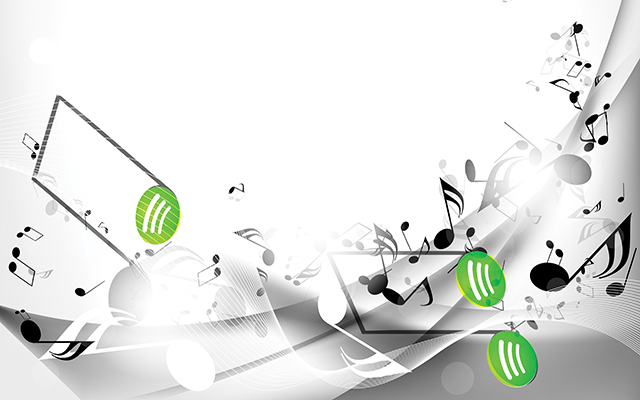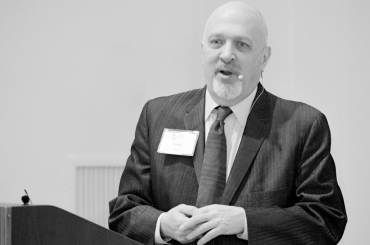It wasn’t long ago that I used to dread my monthly bill from the iTunes store.
The production company I work with has carved quite the niche in the “stripped-down” wedding market. In other words, we mostly steer clear of the bells, whistles, and cliché music selections that so many clients have become accustomed to at other weddings.
And as such, many of the people who book with us are music aficionados in their own respect, and expect us to deliver a sonic experience that appeases their refined palates. My rule of the thumb, with any couple, is to give them the choice of autonomy or defer to my expertise – or something in between.
In many cases, this meant 20 songs for cocktail hour, 40 songs for dinner, and a few B-Sides for the dance floor, which I may never use again. It makes perfect sense to keep a healthy dose of Frank Sinatra, John Legend, Adele, and Stevie Wonder on one’s hard drive. But, on the other hand, a song like “If She Wants Me” by Belle & Sebastian will cost me $1.29 to make one couple happy, and collected virtual dust for the rest of my wedding career.
The Score: Let’s say I average 50 weddings per year, with half the clients opting to provide an average of 20 obscure and eclectic tracks I may never use again. It’s a rough estimate, but I was spending approximately $500 per year on music that would be useless the minute I finished packing for the night. Adding to this inefficiency was the time needed to curate my library, and delete these songs.
If only there was a way to save the money, time, and virtual space associated with pleasing a very discerning clientele…
As a consumer that happens to DJ, Spotify’s growing popularity (30 million subscribers to date) didn’t make much sense for me personally. After all, I’ve collected terabytes worth of music over the years that I can perform with, or enjoy on my own time. Why spend $120 per year to access a streaming music platform, if I already own most of what they were offering? The operative word, here, is most.
Spotify’s library is immense and, more importantly, chock-full of obscure genres, artists, and songs that fill the gap in my existing collection. I’m all for supporting independent labels, underground musicians, and artistry in general – but I also have a business to run. By making the switch from purchasing songs to subscribing to Spotify, I stood to save roughly $400 per year.
In Practice: I pitched this idea to the owner/operator of my production company a few years ago, and it took a great deal of persuasion to convince him that this method was secure, let alone a bonus for clients. With his graces, I began asking couples, during initial consultations, whether they used Spotify. The answer was often an ecstatic “yes!”
Now, I am not lazy or unwilling to curate dinner or cocktail playlists, but I’d leave the option on the table for them to create their own—half-joking that they could pour a glass of wine and make a “date-night” of the experience. As expected, the more discerning clients were more than happy to micro-manage the soundtrack for their evening. So, with months to add and subtract to their playlists, couples found this process to be quite helpful in narrowing down a wide music spectrum to the songs that truly reflect their vision for their big day.
Even better, Spotify offers an “available offline” feature that essentially allows one to rent songs; storing them temporarily on their hard drive without the need for a Wi-Fi or cellular signal. Even without a premium account of their own, clients could create a playlist, send the link to my email, and I could be 100-percent confident it would be ready to use with the click of a button. The playlists would then be accessible on my laptop, my backup laptop, my iPad, and my cell phone.
We’ve all heard horror stories about gigs-gone-bad due to the failure of a device. Electronics do fail. Hard drives crash. Drinks are spilled. However, you do not need a doctorate in mathematics to conclude that four different devices failing on the same day is virtually impossible.
Limits: You may have noted that the scope of this discussion has been limited to ceremony, cocktail, and dinner music. The dancefloor is a different animal. DJs who use a jukebox-style for dancing still exist, and many of them are quite successful without turntablism, beat-juggling, or even simple blending. If you fit this description, you could conceivably employ this same strategy for your entire event.
But, if you’re a DJ who provides a dynamic performance with seamless transitions, wordplay, and fine-tuned mixing, Spotify will not fully satisfy your needs – that is obvious. However, it doesn’t hurt to have dancing requests readily available on your Spotify account. It also doesn’t hurt to have specific playlists of “wedding favorites” saved in case your software or hard drive fails. In fact, algoriddim’s djay applications play tracks from your Spotify collection, meaning that you can still “perform” on an iPad (or iPhone) if your main system fails.
A Failsafe: So many things can go wrong with electronics. Needles can break, control vinyl can warp in the heat, software can crash unexpectedly, digital files can be corrupted… the list goes on. At the least, this program offers a contingency plan for these worst-case scenarios.
It hasn’t happened yet, but the law of averages suggests that someday I will be in a position where my turntables, controller, and mixer all go down. It will be a painful and stressful experience, but I will at least know that my current method will ensure that I have the appropriate music for the occasion – even if I’m using an auxiliary wire connected to my iPhone 6s.
Playlists & Other Options: It is worth noting that Serato’s recent update includes Pulselocker – a service that provides a similar utility. There’s also Apple Music, which has been rising in popularity. However, as of this writing, the overwhelming majority of the clients I serve use Spotify. As long as that is the case, we can share music like we are next-door neighbors.
I would not feel comfortable asking a client to spend time downloading an app, let alone pay for one. As noted earlier, I simply ask if they are subscribers during our initial consultation. If the answer is yes, we have a great platform to efficiently manage the music for their wedding.
If the answer is “no,” they’re likely to ask me to take the lead on music selections. The planning document I provide includes a robust list of genres to select from; I’ve curated Spotify playlists for each of these genres that I can send to them for review.
In most cases, they’ll trust my judgment and add a few specific suggestions – time and money are still being saved in spades. I also follow, and make available offline, a collection of playlists that make sense for your average wedding party. Lightning could strike my booth, and I’m still in position to deliver a vibrant party. Isn’t that what we’re paid the big bucks for?
Most venues I work at do have Wi-Fi. My iPhone usually has reliable service. I’ve spoken about streaming music mostly in the absence of internet connectivity. That is simply an abundance of caution. When I have a reliable connection to the internet, I also have the luxury of taking almost any request. I plan for the worst, and hope for the best.
An Example: My most recent event had a bride and groom who loved Pearl Jam. (For what it’s worth, other than “Even Flow” and “Jeremy,” I find their music to be unrecognizable to the common music fan.) They also neglected to include many of Pearl Jam’s classics on their planning document, so I wasn’t inclined to download their discography, just in case. I did, however, use my cellphone to stream “Better Man,” an impromptu request that paid big dividends.
Had my cell been out of service, or a Wi-Fi signal too weak for reliability, I would have been forced to turn down a valid request that lit up the room. Never rely on network access, but when it’s there, it can be a Godsend. If it’s not, make sure your clients understand the reality of the situation and they’ll never complain.
The Bottom Line: Armed with several emergency playlists, couple-provided playlists, and a slew of devices with the Spotify application, I have managed to save major amounts of money and time. This is a quintessential example of working “smarter, not harder.”
Redundancy is so important in our business, where you have only one shot to make a lasting impression. So, even if the dreaded day comes where I’m stuck with an iPhone as my only working device, I’ll at least be able to provide the right songs at the right time. Whether you’re working a wedding, a bar mitzvah, or a club, it is your primary responsibility to keep the music going, and I have yet to see a fail-safe option that is cheaper or more efficient.








